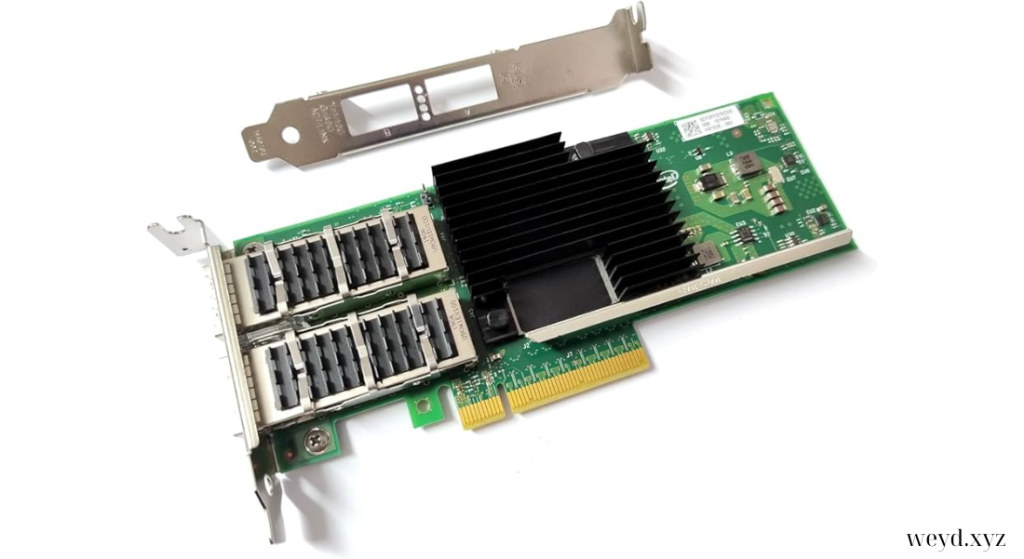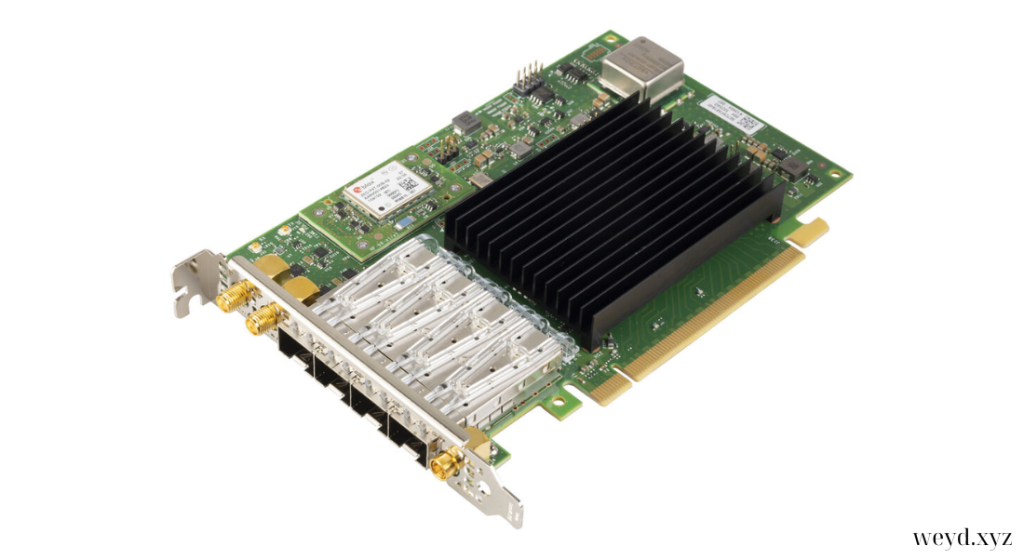In the modern digital landscape, effective communication is critical for the performance and functionality of electronic devices. Intel has positioned itself as a leader in the development of networking components, offering a broad array of products designed for seamless connectivity across various applications. From consumer electronics to enterprise solutions, Intel networking components enable engineers and developers to create robust and efficient communication systems. This article will explore the significant advantages of integrating Intel networking components into your designs, detailing their features, applications across industries, and best practices for implementation.
Key Highlights
- Overview of Intel Networking Solutions: A detailed look at the types of networking components offered by Intel and their specific roles in enhancing connectivity.
- Key Features and Advantages: Understanding the essential characteristics that make Intel networking solutions reliable choices for efficient communication.
- Applications Across Various Industries: How Intel networking components are utilized in diverse sectors to boost performance and efficiency.
- Best Practices for Component Integration: Tips for effectively incorporating Intel networking solutions in your projects.
- Evaluating Your Networking Requirements: Techniques for selecting the right Intel networking components for your specific applications.
1. Overview of Intel Networking Solutions: A Comprehensive Look
Intel offers a diverse range of networking components that cater to various applications and industries. These include:
- Network Interface Cards (NICs): Intel NICs are designed for high-performance data transfer and are essential for connecting devices to networks. They support various communication protocols, providing reliable performance in both wired and wireless environments.
- Switching and Routing Devices: Intel’s networking switches and routers facilitate efficient data management and communication between multiple devices. These components are crucial for building scalable and flexible network architectures.
- Ethernet Controllers: Intel’s Ethernet controllers enable devices to connect to Ethernet networks, offering high-speed data transfer capabilities. These controllers are used in applications ranging from consumer electronics to industrial automation.
- Wireless Solutions: Intel’s wireless components, including Wi-Fi and Bluetooth solutions, provide seamless connectivity for various devices, enhancing user experiences in consumer electronics and IoT applications.
2. Key Features and Advantages: Enhancing Your Design
Integrating Intel networking components into your designs provides numerous benefits that significantly enhance project outcomes:
- High Performance: Intel’s networking solutions are engineered for optimal performance, delivering fast data transfer rates and low latency. This capability is essential for applications requiring real-time communication, such as video conferencing and online gaming.
- Reliability: Known for their robust performance, Intel’s products are designed to operate under demanding conditions. This reliability ensures consistent connectivity and minimizes downtime in critical applications.
- Scalability: With Intel’s networking solutions, designers can easily scale their systems to accommodate increasing demands. Whether expanding an enterprise network or developing IoT applications, Intel components provide the flexibility needed for future growth.
- Advanced Features: Many Intel networking components come equipped with advanced features such as Quality of Service (QoS) management, security enhancements, and support for virtualization. These features allow designers to create more efficient and secure networking solutions.
- Seamless Integration: Intel’s components are designed for easy integration with existing systems and software, reducing development time and effort. This compatibility ensures quick implementation without extensive modifications.

3. Applications Across Various Industries: Versatile Usage
Intel networking components are utilized in a wide array of applications across different industries, showcasing their versatility and effectiveness:
- Consumer Electronics: In devices such as smart TVs, laptops, and gaming consoles, Intel networking components enable high-speed internet connectivity, allowing for smooth streaming, gaming, and online interactions.
- Automotive Technologies: Intel networking solutions are critical in modern vehicles, supporting advanced driver-assistance systems (ADAS), infotainment, and vehicle-to-everything (V2X) communication. These components enhance vehicle safety and connectivity, paving the way for the future of smart transportation.
- Industrial Automation: In industrial environments, Intel networking components facilitate communication between machines and systems, improving efficiency and monitoring capabilities. They are essential in applications such as remote monitoring, predictive maintenance, and smart manufacturing.
- Healthcare Innovations: In medical devices and healthcare systems, reliable networking components ensure seamless data transfer for patient monitoring, diagnostics, and telemedicine applications. Intel’s solutions support secure and efficient communication, which is vital for patient safety and care.
4. Best Practices for Component Integration: Ensuring Successful Adoption
To effectively integrate Intel networking components into your projects, consider the following best practices:
- Define Your Networking Requirements: Clearly outline your application’s performance and connectivity needs, including bandwidth, latency, and security requirements. This understanding will guide your component selection and design process.
- Select the Right Networking Components: Choose Intel networking solutions that align with your project specifications. Consider factors such as performance, compatibility, and scalability to ensure optimal results.
- Utilize Development Tools and Resources: Take advantage of Intel’s development tools, including evaluation boards and reference designs, to streamline the development process and reduce time-to-market. These resources help prototype and test your designs quickly.
- Engage Technical Support Services: Intel provides robust technical support to assist with integration challenges and optimization. Their experts can offer valuable insights to enhance your project and help troubleshoot issues.
5. Evaluating Your Networking Requirements: Choosing the Right Components
When selecting Intel networking components for your project, it’s essential to evaluate your specific needs:
- Performance Criteria: Assess the performance characteristics needed for your application, including data transfer rates, latency, and reliability. Higher performance may be necessary for applications requiring real-time communication.
- Scalability Needs: Determine how scalable your networking solution needs to be. Consider the potential for future growth and select components that can accommodate increased demands without compromising performance.
- Security Considerations: In today’s interconnected world, security is paramount. Ensure that the selected Intel components support the necessary security features to protect your network and data.
- Budget Constraints: Take into account your budget and the total cost of ownership, including development tools, licensing, and potential production costs. While some components may have a higher initial cost, the long-term benefits in performance and reliability can justify the investment.
Conclusion
Integrating Intel networking components into your designs can dramatically enhance communication efficiency, reliability, and overall system performance. With a wide array of products tailored to meet various industry needs and robust features that ensure reliability, Intel networking components empower developers to create advanced communication solutions. By leveraging Intel’s technology, you can optimize your designs and ensure seamless connectivity in an increasingly interconnected world.
FAQ
- What types of networking components does Intel offer?
Intel provides various networking components, including network interface cards (NICs), switches, routers, Ethernet controllers, and wireless solutions. - How can Intel networking components improve my design?
Intel networking components enhance performance, reliability, and scalability while optimizing power management for greater efficiency. - Are Intel networking components suitable for automotive applications?
Yes, Intel networking components are designed to meet the stringent requirements of automotive applications, offering robust performance and reliability. - Where can I find support for integrating Intel networking components?
Intel provides extensive technical support, including development tools, documentation, and resources to assist with integration. - How do I select the right Intel networking components for my project?
Consider your project’s specific requirements, including performance, scalability, security, and budget, and consult Intel’s resources for guidance.


